Good morning from a windswept Foxford, its not so nice out there this morning. Two named storms in three days, not sure it’s a record but it certainly is lively. Water levels have come a lot in the past week. While this creates problems for angling in the short term it’s good for the longer term. We should have good levels throughout the spring, which will help.
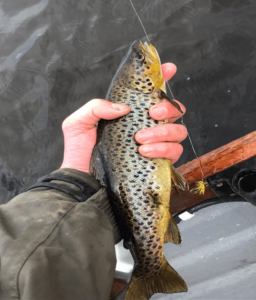
The trout season started on Feb 15th. It was a pretty nasty day but I know a few anglers who ventured out. Speaking to one of them last night he told me he rose a trout in the first few minutes and an hour later caught a plump 30cm brownie, a nice start to his season.
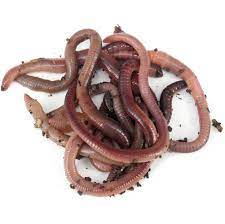
Over the past few weeks ive mentioned a few flies that are important to have in your box. On some occasions and especially when the water levels are high and the water is coloured the only way to catch a fish is on the worm. Todays blog is a little bit about worm Fishing. Its a piece I done last year but the information is still good.
Worm Fishing
At its simplest worm fishing is merely using an earth worm and hook attached to a piece of fishing line, something that as kids we enjoyed catching little brown trout and eels in a local stream with. It has always been a favored method on the Moy where indeed many parts of the river are only suitable for bait fishing. It is a productive and interesting method if fished properly but fishing it properly takes a degree of skill which is something many purists seem to miss. I’ve often heard anglers dismissing worm fishing due to the fact that in their opinion it did not require skill or thought and was so simple that it is unsporting. In my opinion these people have never witnessed a “good” worm fisher practice his craft. I grew up in an era where there were several of these anglers who fished various parts of the river, each had intimate knowledge of his “Spot”. Knowing where the fish would lie at certain levels, where the snags were, the correct weight to use, how to slow down or speed up his bait, how to react to each take, whether to use a float or “fish the bottom”, a good bait from a bad bait so on and so forth. Most of these anglers were happy enough to see a young lad fishing and would share knowledge. Others had to be observed, sometimes from a safe distance but I’m happy enough to say that I learned from the best and at the age of nine caught my first Salmon on the worm.
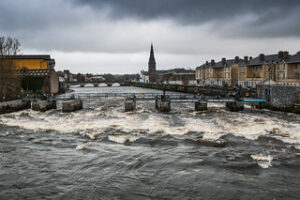
“The worm” is probably at its best as a method when fished on a falling flood when the water is still somewhat colored. At this stage there are two main methods of fishing it i.e., with a float or “on the bottom” which is fishing without a float, just using a weight, swivel and hook. Both methods work. In general, there are two critical factors to success No1 Speed, No.2 bait / presentation.
Speed: The correct speed is achieved by choosing a suitable weight and adjusting the length of our “Cork Line” (i.e., the length of line between the hook and Line stop). The angel the rod is held at and whether our fishing line is off the water or lying in a belly on the surface is also a factor and a useful one in fine tuning. Too fast and you will catch nothing, to slow you will feed the perch and eels. We are always trying to have our bait moving along at a moderate speed, about 1m every 15 seconds. Of course, this speed will not be exact, the weight may get caught on the bottom in places or you may find it necessary to speed it up a little now and again. The idea is to find a happy middle ground. Judging the speed the bait is fishing at is easier done with a float, we can see the float moving. When fishing without a float we must learn to judge by feel what’s happening.
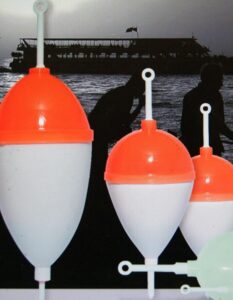
Bait: There’s a few different schools of thought on which worm is the best to use, some will say it’s the Black Head also known as a Blue head, some will say a Lobworm and others a Red head or Dendrobena. I honestly don’t know, I can say for definite that each has its good and bad points. The Black head is very tough and a bait will last a long time but they are scarce and expensive. The Lobworm is big and Juicy but they are lifeless, soft and break easily. The Red head is reasonably tough, more plentiful and very lively but they have a strong smell and squirt yellow juice when stuck with a hook. They also have a habit of escaping through the smallest of holes! Whichever we choose to use (normally dictated by what’s available) we should present the bait as best we can. A fresh, clean medium sized bait is best. Generally 3 worms, the first two are threaded onto the hook and slid up the line, the third is threaded onto the hook to just above the barb with the point left protruding. The bait should be “freshened up” periodically. We do this by pulling of one or two worms from the line, sliding the worm already on the hook up the line and putting a new worm on the hook. Always keep an eye out for weed which has been picked up from the river bed. Remove this immediately as when a fish does take it will instantly “drop” a bait with weed.
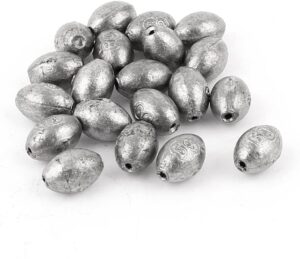
The set up: For float fishing we start the set up by putting a rubber stopper or stop knot on our main line. This stopper is movable and can be adjusted to suit different depths of water. After we have put on a stopper we slide a small plastic bead onto the line, normally an 8mm plastic bead is ideal. Make sure that the stop knot cannot slip through the hole in the bead and that the bead itself cannot slide through the hole in the float. Place a suitable float with another bead under the float and then tie on a normal barrel swivel (about a size 8). We then tie a 20cm piece of monofilament to the other end of this swivel. Slide a weight (either a pierced lead bullet or a bait controller) onto this piece of line followed by a rubber shock absorbing bead, we then tie another swivel of the same size to the end of this piece of line. The rubber bead stops the lead weight hitting and damaging the knot. To the other end of this swivel we add another piece of Monofilament line of approx. 60cm, we finally attach our worm hook to the end of this piece of line. Hook size and line size are a personal choice. I use hooks between size 1 and 4 normally, changing the size depending on water conditions and time of season. Normally larger hooks in spring time and the smaller ones in summer. For Monofilament I use Stroft ABS in sizes 0.27 up to 0.35mm, again depending on conditions and time of season. The stopper should now be set at a depth which is approx. one and a half times the depth of the water where we plan to fish e.g. water is 2m deep set stop knot at 3m. This will allow our weight to go to the bottom of the river and our float will lie on its side on the surface, once the bead above the float reaches the stopper it cannot pass and the float will now start moving downstream pulling our bait along. We will see the float react as the weight moves along the bottom and over stones etc. This is where we need experience and some skill in mastering the speed we fish at. As I already said too slow or stopped and we will get lots of bites from perch and eels, too fast and we will catch nothing. Play about a bit, raise and lower your fishing rod so the line is off the water or creating a belly of line to pull the float along, see what the difference is. Try different weights and increase or decrease the “Cork line”. Take time and get it right, these are the differences between success and failure. When a fish bites (The Take) varies, some fish are aggressive and take fast and hard others play with the bait, picking it up and dropping it. They may move out or back down slowly with the bait. All of these things you need to experience to decide how best to deal with them but typically when a fish takes you will notice a “Livelier” action on the float. Normally an initial two or three sharp dives under the surface it may then move further along, the best thing to do initially is just wait. You can slowly wind up any slack line that may be out. Once the fish has taken the bait properly it will run, you will see the float disappear under the surface, and at this point you should already have the slack line taken in and be ready to strike. Don’t be half-hearted, a good swift sharp strike and set the hook properly.
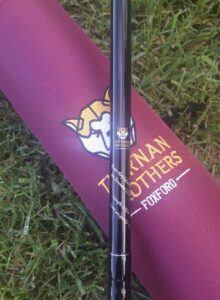
Up to now I have spoken about float fishing with the worm. Well as I said earlier it’s easier to physically see what’s happening when we use a float. We can pick a stretch of water and quite easily fish in rotation along the entire stretch keeping parallel with our float, trying different casts, closer in or further out. So why would we choose to omit the float and fish with just the weight?
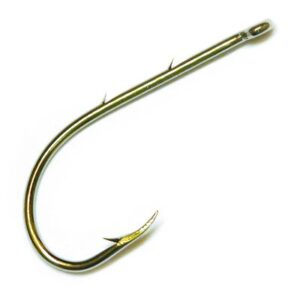
The main time I would recommend fishing without a float is in a very heavy flow, whether this is the normal current which is strong or we are fishing during a high-water period either a flood or early season and there’s an increased volume of water which means we need larger weights to slow things down a bit, to remove the float can be a good idea. Another occasion would be sometimes when we are fishing in a confined space where it’s not possible to walk parallel to the float it is a good idea to fish with just a weight and try various casts, letting the bait sweep round in an arc. In very low water some of the streamy parts of the river can be well worth trying using very light weights and just letting the bait run freely through the water, this is best done without a float. The main difference between fishing with or without the float is that obviously enough when we use the float we have an indicator as to what’s happening with our bait. Without the float we must depend on our senses, holding the line on the tip of the index finger we feel what’s happening. A slow steady pull, we are snagged on the bottom. Two or three hard long heavy pulls, a springer. A series of lively tips, a trout. It’s a simple and exciting way to fish. All we need is a suitable weight and a swivel with 60cm of monofilament to which we attach a hook and bait of worms. Try casting to various lies from different angles. When a bite is detected let out a few meters of slack line to give the fish a chance to take the bait properly without resistance, once the bite gets stronger, strike. On the right day in the right place, it’s as interesting and sporting as any other method. On another day when you’ve lost 6 hooks in 6 casts it’s frustrating as hell, but… Life can be like that some days.

